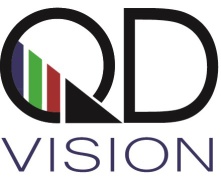Partnership Will Enable Mainstream Adoption Of Rec. 2020 HDR Displays With A Cost-Effective, Slim-ProfileQuantum Dot Backlight Design
Sigma Designs® (NASDAQ: SIGM), a leading provider of intelligent system-on-chip (SoC) solutions focused on Internet of Things ( IoT) , Smart TV and media connectivity markets , and QD Vision, the global leader in quantum dot display technology, announced a strategic partnership to develop a cost-effective UHD TV platform with High Dynamic Range (HDR) and Rec. 2020 performance. The platform will be based on Sigma’s TV SoC and frame rate conversion (FRC) chips, and QD Vision’s Color IQ™ quantum dot (QD) technology.
In the quest for better pixels and lower costs, LCD TV makers are working quickly to adopt important new technologies like HDR and QD technology. The next wave of Ultra HD TVs will offer the combination of HDR and Rec. 2020 to offer the most life-like and immersive consumer viewing experience. So far, these capabilities can only be found in the extreme high-end of the TV market. Achieving mainstream adoption without sacrificing image quality requires tighter integration between the TV’s firmware (e.g. SoC or FRC) and its hardware (e.g. backlight, panel, etc.), which spurred the strategic partnership between Sigma Designs and QD Vision.
 |
|
QD Vision logo. (QD Vision/LEDinside) |
“We expect HDR to become a mainstream feature in UHD TVs very soon. To help our customers to offer cost effective and performance optimized solution, Sigma Designs and QD Vision are working together to combine High Dynamic Range and Rec.2020 Wide Color Gamut in an intelligent way to improve the combined image quality ” said Alfred Chan, Sigma Designs’ vice president, product marketing multimedia business unit. ““QD Vision’s Color IQ optics, combined with Sigma’s extensive video processing expertise, will enable OEMs to approach the cutting-edge Rec. 2020 color to deliver the best HDR performance.”
QD Vision and Sigma Alliance have developed a reference design for TV manufacturers to accelerate commercialization of high-performance Rec. 2020 HDR UHD TVs with minimal financial and R&D investment. In addition, the reference design will leverage cost-effective components from both companies to enable affordable, slim-profile Rec. 2020 HDR TVs in both curved and flat display configurations.
QD Vision’s VP of Products, Jim Carlton, adds: “HDR and wide color gamut solutions like our Color IQ solutions are, in two words, better together. We at QD Vision are excited to be working with an industry leader like Sigma Designs to fully integrate HDR and wide color gamut technologies into their SoC and FRC solutions. With Color IQ technology, we’ve demonstrated that we can already expand the color gamut range of LCDs to achieve >90% Rec. 2020, a color space that displays using OLED technology will have difficulty reaching. With this new collaboration, we’re heading toward a price-performance range where OLED displays won’t be able to compete.”
Sigma is demonstrating the QD Vision platform, powered by the Sigma Designs SoC and FRC at CES 2016 in Las Vegas, January 6-9 in the Westgate Hotel, suite 2992.
For more information about Sigma Designs, visit www.sigmadesigns.com.
Follow us on Twitter: @sigma_designs
Join us on LinkedIn: sigma-designs












